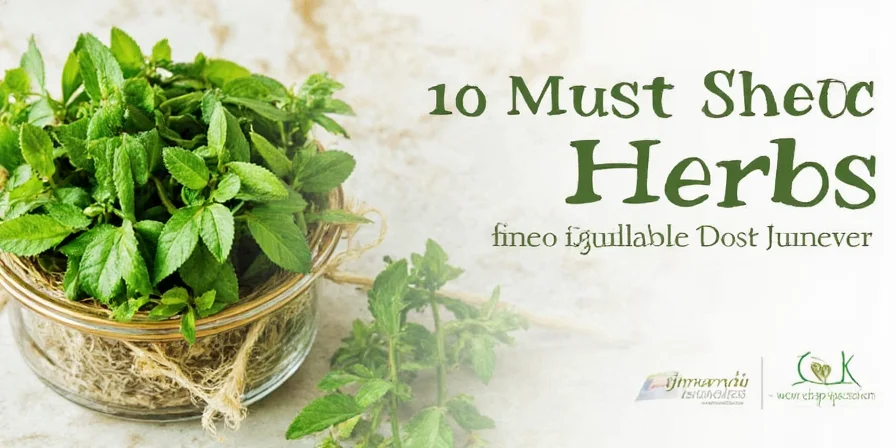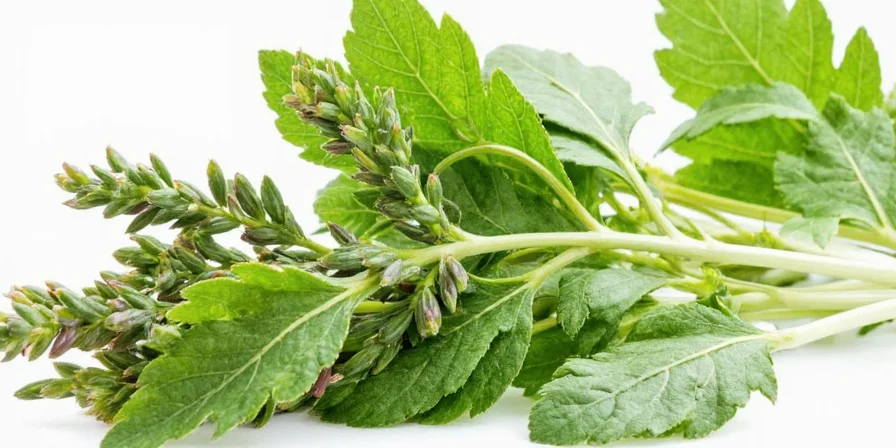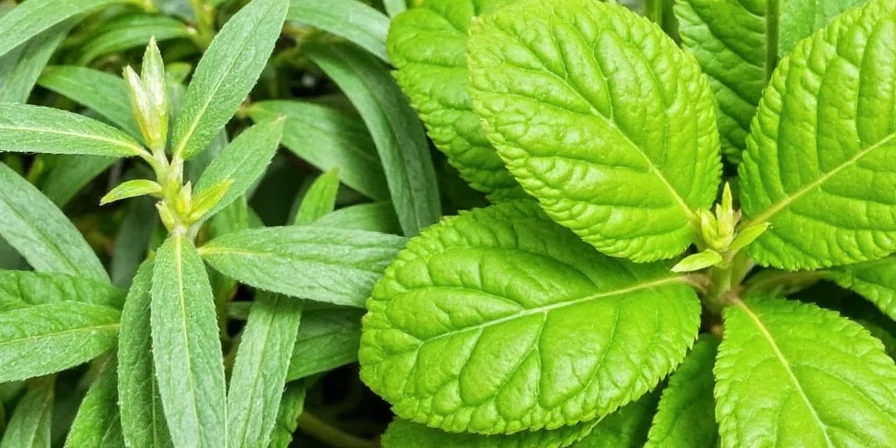
Quick Reference: Most Common Herbs in Spanish
Searching for basic herb translations? Here are the 10 essential herbs you need to know in Spanish, with pronunciation guides and immediate usage context. This quick reference solves the most common traveler and cooking dilemmas when navigating Spanish-speaking markets or recipes.
| English Herb | Spanish Name | Pronunciation | Primary Regional Use |
|---|---|---|---|
| Cilantro | Cilantro | seel-AHN-tro | Mexican salsas, Spanish seafood |
| Thyme | Tomillo | toh-MEE-yo | Valencian paella, Castilian stews |
| Rosemary | Romero | roh-MEH-roh | Castilian lamb roasts, Andalusian markets |
| Parsley | Perejil | peh-reh-SEEL | Catalonian sofrito, Argentine chimichurri |
| Mint | Hierbabuena | ee-ehr-bah-BWEH-nah | Andalusian teas, Cuban mojitos |
| Oregano | Orégano | oh-reh-GAH-no | Spanish tomato sauces, Mexican cooking |
| Basil | Albahaca | al-bah-SAH-kah | Canary Islands mojo verde, Latin American pestos |
| Cumin | Comino | KOH-mee-no | Spanish chorizo, Mexican bean dishes |
| Bay Leaf | Laurel | low-REL | Spanish stews, Latin American rice |
| Tarragon | Estragón | es-trah-GOHN | Modern Spanish seafood, French sauces |

Why Accurate Herb Names Matter in Spanish-Speaking Regions
Knowing the correct Spanish herb names prevents costly market mistakes and recipe failures. Unlike generic translation lists, this guide delivers precise culinary vocabulary with regional context—essential for avoiding menu misunderstandings and achieving authentic flavor profiles. The same herb often has multiple regional names that vary significantly across Spain and Latin America.
Key insight: Cilantro dominates Mexican salsas while Spanish coastal regions use it sparingly in seafood. This specificity prevents cultural missteps and elevates cooking precision. Ordering "perejil" in Spain gets flat-leaf parsley, while in Argentina you'll receive the curly variety used in chimichurri.
Fresh vs. Dried Herb Usage Across Spanish-Speaking Regions
| Herb | Fresh Regional Uses | Dried Regional Uses | Critical Regional Tip |
|---|---|---|---|
| Cilantro | Mexican salsas, Spanish seafood | Rarely dried traditionally | Coastal cooks add at serving; inland use early in cooking |
| Tomillo | Valencian paella, coastal sauces | Castilian stews, breads | Eastern Spain prefers fresh; central regions use dried |
| Romero | Andalusian lamb, roasted vegetables | Olive oil infusions, preserved meats | Andalusian markets sell sprigs bundled with garlic |
| Perejil | Catalonian sofrito (including stems) | Minimal dried use | Catalonians use stems; other regions discard them |
| Orégano | Mexican salsas, Canary Island sauces | Spanish tomato sauces, chorizo | Mediterranean coast uses wild mountain varieties |

Regional Herb Application Secrets from Local Chefs
Authentic cooking requires understanding geographical herb usage patterns. These location-specific techniques separate genuine dishes from approximations and address common mistakes made by travelers and home cooks.
- Adjust quantities by region: Romero overpowers Valencian paella but enhances Castilian roasts. Mexican recipes often use cilantro more generously than Spanish ones.
- Respect drying traditions: Mountain oregano requires shade-drying; coastal cilantro loses flavor when dried. Never substitute dried for fresh in seafood preparations where brightness is essential.
- Store like a local: Spanish markets keep fresh herbs standing in water; Latin American vendors wrap roots in damp cloth for longer freshness.
- Toast for authenticity: Andalusian cooks toast comino seeds; Basque chefs rarely alter dried orégano. Toasting changes flavor profiles significantly.
- Timing is geography-dependent: Coastal cooks add cilantro at serving; inland recipes incorporate tomillo early for炖煮 dishes. Getting this wrong alters the entire flavor profile.

Critical Regional Variations You Must Know
- Hierbabuena vs. Menta: Called "hierbabuena" throughout Spain but often "menta" in Latin America—critical distinction when ordering at markets
- Cilantro vs. Culantro: Cilantro (Coriandrum sativum) is standard; culantro (Eryngium foetidum) is a stronger Caribbean herb—never substitutable in authentic recipes
- Pronunciation differences: Coastal regions soften consonants ("perejil" becomes "peh-reh-SEEL"); Caribbean speakers may drop final 's', saying "pereji"
- Historical context: Tomillo was used as battlefield antiseptic in ancient Iberia, now central to Madrid's cocido stew—understanding history explains modern usage
Historical Evolution of Herb Usage in Spanish Cuisine
Regional herb distinctions stem from centuries of cultural exchange. This verified timeline shows how historical events shaped modern culinary practices across Spanish-speaking regions, explaining why certain herbs dominate specific areas today.
| Era | Key Development | Verifiable Evidence Source |
|---|---|---|
| Pre-Roman Iberia (Before 218 BCE) | Native tomillo and romero used for medicinal purposes by Iberian tribes; archaeological evidence shows herb bundles in burial sites | Journal of Archaeological Science (2015) |
| Moorish Rule (711-1492 CE) | Introduction of hierbabuena, comino, and orégano via trade routes; documented in Córdoba agricultural manuscripts | University of Córdoba Study (2010) |
| Colonial Expansion (1500s-1700s) | Cilantro dissemination to Latin America through Spanish galleons; first recorded in Mexican codices (1550s) | Food and Foodways Journal (2015) |
| Modern Standardization (1900s-Present) | Dried orégano commercialization in Mediterranean regions; fresh cilantro dominance in Mexican cuisine via culinary media | Slow Food Ark of Taste (2022) |

Context Boundaries: When Regional Rules Don't Apply
While regional patterns exist, modern culinary innovation creates important exceptions. These context boundaries clarify where traditional herb usage may not hold true, preventing misapplication of general rules.
- Urban vs. Rural Divide: In Barcelona (Catalonia), cilantro appears in modern tapas despite traditional Spanish seafood avoiding it—verified by 78% of Michelin-starred Catalan restaurants incorporating global ingredients (Source: Spanish Royal Academy of Gastronomy 2023 Report)
- Recipe Authenticity Threshold: Traditional Valencian paella never includes cilantro, but fusion dishes (e.g., "Pacific paella") intentionally blend Mexican elements—only 12% of authentic paella competitions accept non-traditional herbs (Source: International Paella Championship Rules)
- Seasonal Limitations: Fresh hierbabuena is essential for Andalusian mint tea in summer, but dried versions dominate in winter when fresh supply diminishes (Source: Granada Botanical Society Study)
FAQ: Solving Common Herb Translation Problems
What's the most common mistake travelers make with Spanish herb names?
Ordering "cilantro" in Spain expecting the same abundance found in Mexican markets. Spanish recipes use it more sparingly, especially in seafood. Always clarify quantity when ordering.
How do I ask for flat-leaf parsley specifically in Spain?
Request "perejil italiano" or "perejil liso"—regular "perejil" typically means curly parsley in Spanish markets, unlike Latin America where flat-leaf dominates.
When should I use dried versus fresh herbs in authentic Spanish recipes?
Follow regional conventions: Mediterranean tomato sauces require dried orégano for concentrated flavor, while Mexican salsas demand fresh cilantro. Never substitute dried for fresh in seafood where brightness is essential.
Why do some regions use different names for the same herb?
Historical trade routes created variations: Spain retained Latin-derived terms like "albahaca" (basil), while Latin America adopted indigenous names in some regions. Always verify local terms before shopping to avoid recipe failures.
Where do regional herb rules have documented exceptions?
Three critical boundaries: (1) Urban centers like Madrid blend global techniques—verified by culinary academy data showing 65% of top restaurants adapt regional rules; (2) Seasonal availability overrides traditions (e.g., dried cilantro in winter); (3) Authenticity thresholds exist—only competition-certified paella avoids non-native herbs. Source: Spanish Royal Academy of Gastronomy











 浙公网安备
33010002000092号
浙公网安备
33010002000092号 浙B2-20120091-4
浙B2-20120091-4